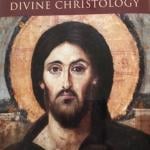“In the Last Days, the Word of God, which was clothed with the flesh of Mary, proceeded into this world. What was seen in him was one thing; what was understood was something else…So also when the Word of God was brought to humans through the Prophets and the Lawgiver, it was not brought without proper clothing. For just as there it was covered with the veil of flesh, so here with the veil of the letter.” [i]

In this charged excerpt, the exegetical giant of the early Church, Origen of Alexandria, reveals in a concise manner his approach to scriptural interpretation—and additionally makes an immense pronouncement regarding incarnational theology (The latter of which is beyond the scope of this post, but let it suffice to simply suggest that the Alexandrian understood that the Son of God was “enscriptured” before He assumed a human nature.). The irregular Church father continues: “indeed the letter is seen as flesh but the spiritual sense hiding within is perceived as divinity.” Origen approached difficult books of the Bible—such as Leviticus—as tasks in which one must coax out hidden meanings from texts that portray complex historical realities.
J.N.B. Carleton Paget echoes this notion by suggesting that the spiritual level of interpretation was the most significant to Origen and to which the thinker believed even the Apostle “Paul refers in a number of passages.” [ii] The Alexandrian looked to the authors of the New Testament as models for proper exegesis, and thus determined layers of interpretation to be crucial when fishing for the will of the Almighty within the Biblical text. In the paragraphs that follow, I shall hone in on Origen’s uniquely profound interpretation of the Old Testament by offering a few comments that seek to shed additional light upon the ancient exegete’s Homilies on Leviticus.
Origen and Rabbinic Interpretation
*There are a few quotes to consider in this section, so please bear with me and I shall explain their purpose presently.*
Leviticus 1:10
But if his offering is from the flock, either from the sheep or from the goats, as a burnt offering, he shall offer a male without defect.
Rashi (A medieval Jewish commentator on the Hebrew Bible and Talmud)
“We have here three limitative terms [the three instances of “from,” or “מִין”in Hebrew], excluding an old one, and a sick one, and a filthy one.” [iii]
Leviticus 1:5
Then he shall slaughter the bull before the Lord; and Aaron’s sons the priests shall offer up the blood and sprinkle the blood around on the altar that is at the doorway of the tent of meeting.
Origen
“…Perhaps this is not done without a reason since what it had earlier said, He will bring it to the door of the Tent of Meeting (Lev. 1:3), it repeated in what follows next, and says again, at the altar that is at the door of the Tent of Meeting, as if it would not suffice that the same place was designated once in the same narrative. Unless, perchance, he wanted it to be understood that Jesus’ blood was poured out not only in Jerusalem where the altar and its base and the Tent of Meeting were, but also that the same blood itself was to be sprinkled on the celestial altar which is in heaven…Thus also the Apostle says, He made peace through the blood of his cross both with those who are on earth and those who are in heaven (Col. 1:20). Therefore it rightly names a second time…However, do you want to know how there was a double sacrifice in him, suitable for those on earth and appropriate for those in heaven?..If therefore, two veils (earthly and heavenly) are understood which Jesus, as it were, entered as high priest, in the same way we are to understand a double sacrifice through which he will have saved both those on earth and those in heaven.” [iv]
Here we can detect Rabbinic echoes cascading across the sons of Abraham like a relentless river. Truly, Origen’s method of interpretation appears to be nearly identical (at least with regard to repetitions in the text) to that of Rashi’s and his predecessors’; there is no doubt that the Christian’s thought was heavily affected by the Jewish sages of his era. Paget speaks of this in his article (which concerns the exegesis of Origen) by arguing that Rabbinic traditions were a major influence on him later in his life. [v] Like early Jewish exegetes, Origen saw the Hebrew Bible as being free from error and devoid of redundancies, and so this repetition of language presented in Leviticus chapter one has become, in like fashion, a springboard for the unconventional Church father to part the veil of the letter and to raise the spiritual meaning of the text—bringing severe relevance to the contemporary reader who proclaims Jesus as LORD.
To further compare and contrast this hermeneutical technique with Jewish versions of it, it is worth noting that some Jewish expositors interpret duplicate phrases in Leviticus to render specific legal rulings or to give proof for Mishnaic decrees (Like Rashi’s interpretation of the three “froms” above, which represent three types of defective offerings that should not be made), but Origen, on the other hand, harnesses repetitions to ultimately point to the Christian Savior.
Two Altars and Christ’s Descent into Hades
To offer additional commentary on Origen’s explanation of Leviticus 1:5 (above), I would like to suggest a thought which pertains to an early Church teaching, one to which the Alexandrian could be referring in his exegesis above.
Apostle’s Creed
I believe in God, the Father almighty, Creator of heaven and earth, and in Jesus Christ…he descended into hades; on the third day he rose again from the dead…
Reflecting on Origen’s exposition of the text, it seems to me—but perhaps only to me—that his line referring to the “double sacrifice” of Christ which was necessary to save both those on earth and those in heaven could be referring to the official Church teaching of Jesus’ descent into Hades. According to this doctrine, after Christ’s crucifixion, His soul plummeted to Hades, not “Hell” as in Gehenna, Tartarus, or the Lake of Fire, but “Sheol,” the underworld and stock afterlife for those who had perished before the resurrection of the Son (according to some Christians).
During Christ’s descent, He defeated the bonds of death and led those who had died before His Incarnation into paradise. As a result, now believers in Christ who depart from this world after the events of Holy Saturday enter into heaven, not the underworld as the faithful had before. Origen’s revealing of the spiritual meaning of Leviticus 1:5 succeeds in providing application to Christians after the destruction of the Jerusalem temple by showing the whispers of the mystery yet to be brought to light (the Gospel story and message), while additionally providing a prooftext for the Church’s teaching on Christ’s descent, cultivating the notion that two sacrifices were necessary for Jesus’s work to be complete—His torturous death on the cross, and His soul’s plunge into “the lower parts of the earth” (Eph. 4:9).
He Became Sin Who Knew None
Leviticus 4:3
if the anointed priest sins so as to bring guilt on the people, then he is to offer to the Lord a bull without defect as a sin offering for his sin which he has committed.
Origen
“If indeed the high priest, who was appointed, sins, there is added to it, that he made the people sin, he will offer for his sin. How, therefore will it happen that through the flesh which Jesus received from us, having been made sin, he makes the people sin”?…The passion of Christ, indeed, brings life to those who believe but death to those who do not believe. For although salvation and justification are for the Gentiles through the cross, to the [unbelievers] it is nonetheless destruction and condemnation. For so it is written in the Gospels, behold, this one was born for the ruin and resurrection of many. (Luke 2:34) And in this way, through his sin, that is through the flesh given on the cross, in which he received our sins, he certainly freed from sin those of us who believe. But He made the people who do not believe (Rom 10:21) sin, for whom the impiety of sacrilege was added to the evil of disbelief…” [vi]
Origen’s allegorical interpretation of the priest who (potentially) brings guilt upon the nation is not an easy example to contend with. At first glance, it appears to dance haphazardly around the line separating Christian orthodoxy from heresy. Considering this, and to give this instruction its due and proper credit, perhaps further explication is necessary in order to harness its profundity. In this segment of Origen’s third homily on Leviticus, the exegete continues to paint in elaborate strokes his belief that all of God’s scriptural revelation is inspired and useful, even Leviticus, which initially appears “to have no edificatory content for Christians.” [vii]
Here, the Church father unveils and displays yet another teaching that speaks of the LORD’s plan to come (in the New Testament), unpacking the Gospel message rather quite concisely. The priest is another “type” of the Christian Messiah, but Origen isn’t suggesting that Jesus sinned, for Christ was perfect in humanity and divinity; being completely blameless, He wholly upheld the Law of Moses. Instead, the Alexandrian father alludes to the notion that Jesus, who knew no sin, became sin on our behalf (2 Cor. 5:21). The God-man bore the guilt of all those who had and will come to faith in His saving work; He is the Christ, the vessel through which sin and death were housed and subsequently crucified alongside His bruised and battered body.
In another sense, the Nazarene also became sin simply by assuming the nature of man, which had been mutilated through the cosmic failure of the first humans. Such a thought is more fully fleshed out in the words of St. Maximus the Confessor—another significant theologian who lived several centuries after Origen. Here is an excerpt from his Ad Thalassium 42:
“For our forefather Adam committed two “sins” by his transgression of God’s commandment: the first “sin” was culpable, when his free choice willfully rejected the good; but the second “sin” occasioned by the first, was innocent, since human nature unwillingly put off its corruption. Therefore our Lord and God, rectifying this reciprocal corruption and alteration of our human nature by taking on the whole of our nature, even had in his assumed nature the liability to passions which, in his own exercise of free choice, he adorned with incorruptibility. And it is by virtue of his assumption of this passibility that he became sin for our sake, though he did not know any deliberate sin because of the immutability of his free choice.” [viii]
Jesus became sin by becoming enfleshed in the passible nature of man; He became human, the prerequisite of misdeed, but committed none for this “new Adam” was truly the perfection of the first. Like the temple priest, Jesus associated himself with sin, not by committing it as the priest, but by assuming it (imperfect human nature generally, and the actual debt of the wrongdoing of the faithful particularly), and in so doing, accomplished its destruction for those who believe. The blood of the Incarnate One bleached the souls of the faithful, making them blameless as He; but because God offered Christ’s sacrifice as the method of reconciliation, and some have chosen to refuse it, those who have declined the LORD’s free gift bear the guilt of sin.
Jesus’s work on the cross has and will continue to atone for the sins of many, but it has also solidified the punishment of others; because of Christ becoming sin, the full weight of wrongdoing has been placed upon those who revel in disbelief; they shall continue to commit misdeeds unatoned so long as they shield their eyes from the glory of the cross.
[i] Origen, Homilies on Leviticus, trans. Gary Wayne Barkley (Washington, D. C.: The Catholic University of America Press, 2005), 29.
[ii] Paget, J. N. B. Carleton. “The Christian Exegesis of the Old Testament in the Alexandrian Tradition: 3. Origen as Exegete of the Old Testament.” In Hebrew Bible / Old Testament: The History of Its Interpretation Part 1: Antiquity, edited by Magne Sæbø (Göttingen: Vandenhoeck & Ruprecht, 1996), 512.
[iii] Rashi. Rashi: the Torah with Rashi’s Commentary Vol. 3: Vayikra . Edited by Herczeg Yisrael Isser Zvi. Brooklyn (NY: Mesorah Publications, 1999),
[iv] Origen, Leviticus, 34.
[v] Paget, “Christian Exegesis,” 534.
[vi] Origen, Leviticus, 53.
[vii] Paget, “Christian Exegesis,” 502.
[viii] Maximus, and Paul M. Blowers. On the Cosmic Mystery of Jesus Christ: Selected Writings from St. Maximus the Confessor (Crestwood, NY: St. Vladimir’s Seminary Press, 2003),
















